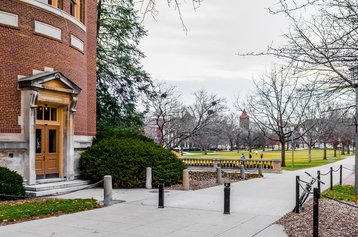The National Center for Supercomputing Applications (NCSA) at the University of Illinois has announced that Delta, a graphics processing unit-heavy compute cluster, is ready for deployment.
The $10 million supercomputer, fully funded by the National Science Foundation (NSF), Delta is now ready to enter operations.
The HPC cluster is hosted at the National Center for Supercomputing Applications, a ~90,000 sq ft (8361 sq m) facility at the University of Illinois that previously housed the now-retired Blue Waters supercomputer.
Bill Gropp, NCSA director, said of the news: “Delta is a tremendous resource for AI and Machine Learning, as well as simulation. Combined with its high-performance file system and features for broader accessibility to communities that have not historically used HPC systems, Delta will help accelerate the adoption and use of these techniques in all areas of research.”
Delta is based on the HPE Cray supercomputer, delivering a GPU-heavy compute system that consists of 132 CPU nodes (each with dual, 64-core 3rd Gen AMD Epyc processors) and 205 GPU nodes (with 840 Nvidia GPUs) that are connected through the HPE Slingshot interconnect.
NCSA will integrate Delta into the national cyberinfrastructure ecosystem through the Advanced Cyberinfrastructure Coordination Ecosystem: Services & Support (ACCESS) and has partnered with the Science Gateways Community Institute (SGCI) of the San Diego Supercomputer Center (SDSC) to provide customized, per-domain science gateways, as well as the conventional command line interface (CLI), to reach both traditional and emerging HPC user communities.
Delta will also be available nationwide via XSEDE allocation.
“Everyone at NCSA is excited to get Delta up and operational for the NSF community,” said Tim Boerner, deputy project director for both the XSEDE and Delta projects. “It is a very forward-looking system in a number of different ways, such as the focus on science gateways support, improved accessibility, the relaxed-POSIX file system we have planned, and of course the massive amount of GPU computing performance this system will add to the XSEDE allocations pool.”
It was also announced this month that the NCSA will be hosting a new supercomputer for geospatial research.
The NSF awarded the Taylor Geospatial Institute, a group of eight institutions in Missouri and Illinois including Saint Louis University, Donald Danforth Plant Science Center, Harris-Stowe State University, University of Illinois, University of Missouri, and others $1 million to install the HPC system at the NCSA.
The supercomputer will be able to run global datasets for thousands of students and faculty who specialize in geospatial science, a field that combines geography, computing, sociology, and other disciplines. Specifications of that system were not shared.
Finding solutions to climate change, food insecurity and other large-scale problems requires huge amounts of computing power, said Vasit Sagan, a SLU professor, and the institute’s acting director.
“All of those big, grand societal challenges intertwine, they’re interconnected, they require global datasets and analytics machine learning AI at scale,” he said. “That’s a massive, massive amount of datasets, and those datasets have to be processed in a way where we can extract useful information to make decisions.”







